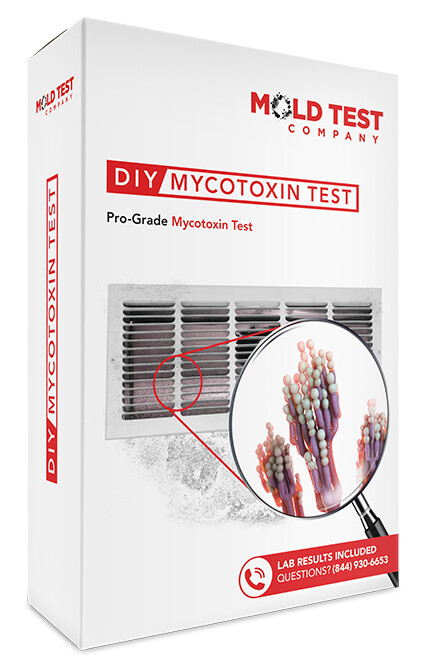Enhance Your Safety Methods with Specialist Mycotoxin testing Services
Wiki Article
Exactly How Mycotoxin Screening Helps Stop Contamination and Secure Food Materials

Mycotoxin screening is a vital method in the food sector, offering as a frontline defense against contamination by damaging toxic substances created by mold and mildews. Via the application of advanced techniques like High-Performance Fluid Chromatography (HPLC) and Liquid Chromatography-Mass Spectrometry (LC-MS), food producers can precisely quantify and discover mycotoxin levels in farming items.
Comprehending Mycotoxins
Recognizing mycotoxins starts with recognizing that they are poisonous secondary metabolites created by specific molds, which can contaminate farming products. These metabolites are not essential for the growth or reproduction of the fungi but can have severe ramifications for animal and human wellness. Mycotoxins are frequently found in staple plants such as corn, wheat, barley, and nuts, where they can proliferate under details conditions of wetness and temperature.
There are numerous kinds of mycotoxins, each generated by various fungal types. Aflatoxins, created by Aspergillus species, are among the most notorious, known for their carcinogenic buildings. One more significant group includes ochratoxins, produced by Aspergillus and Penicillium varieties, which have nephrotoxic effects. Fusarium varieties generate trichothecenes and fumonisins, both of which are related to different severe and chronic health and wellness problems.

Dangers of Mycotoxin Contamination
The risks of mycotoxin contamination are diverse, presenting substantial hazards to both food security and public health. Mycotoxins, toxic substances produced by particular kinds of fungis, can contaminate a large variety of farming products consisting of grains, nuts, seasonings, dried out fruits, and coffee.
Financial impacts are another significant problem. Polluted plants can cause substantial economic losses for farmers and food producers as a result of minimized yields and the requirement for expensive purification actions. Worldwide profession can be considerably impeded as countries impose strict mycotoxin guidelines to protect their populations, leading to turned down shipments and strained profession relationships.
Environmental aspects such as environment adjustment aggravate the risk of mycotoxin contamination. Variations in temperature level and moisture can produce positive conditions for fungal growth, raising the chance of contamination occasions. Thus, understanding and reducing these risks are vital for ensuring the safety and security and honesty of international food materials.
Methods of Mycotoxin Checking
Precisely determining mycotoxin contamination in farming items is vital for guarding public wellness and maintaining food safety standards. Various methods are used to identify and quantify mycotoxins, each offering specific advantages and restrictions.High-Performance Liquid Chromatography (HPLC) is an extensively made use of approach due to its high sensitivity and accuracy. It involves separating mycotoxins from various other materials in a sample, allowing precise metrology. Liquid Chromatography-Mass Spectrometry (LC-MS) integrates fluid chromatography with mass spectrometry to supply detailed molecular information, making it particularly valuable for determining numerous mycotoxins at the same time.

Gas Chromatography-Mass Spectrometry (GC-MS) and Thin-Layer Chromatography (TENDER LOVING CARE) are likewise utilized, each with special applications. GC-MS works for volatile mycotoxins, while tender loving care offers a simpler, economical choice for initial testing.
Benefits of Normal Checking
Regular testing for mycotoxins in agricultural items provides numerous advantages, considerably adding to public health and food safety and security. By determining contamination early, regular screening assists prevent the circulation of poisonous foods, therefore lowering the risk of mycotoxin-related ailments among consumers. This aggressive strategy not only safeguards human health and wellness but additionally boosts the general quality of food supplies.Regular screening also supports regulative conformity. Different nations and regions have actually developed stringent limits for mycotoxin degrees in food and feed. Following these limitations with regular screening ensures that manufacturers and providers meet legal standards, therefore avoiding fines and profession barriers. Maintaining conformity cultivates consumer trust and brand name credibility, which look here are critical for market success.
Additionally, normal mycotoxin testing can lead to significant financial benefits. Early detection of contamination enables timely intervention, reducing potential losses from extensive contamination. Applying routine screening protocols can likewise minimize recall costs and related obligations, which can be financially ravaging.
Additionally, normal screening offers valuable data that can inform better agricultural practices and storage conditions. By comprehending patterns of contamination, manufacturers can adopt preventative steps, thus contributing and minimizing future threats to the sustainability of the food supply chain.
Executing Examining Protocols
Implementing reliable mycotoxin testing methods is crucial for making certain the safety and high quality of farming products. Each phase must be looked at to identify where mycotoxin contamination is most likely to happen.When crucial control points are identified, selecting appropriate screening techniques is essential. Typical strategies include enzyme-linked immunosorbent assay (ELISA), high-performance fluid chromatography (HPLC), and mass spectrometry (MS) Each approach has its weak points and strengths; therefore, choosing the appropriate one relies on the details mycotoxin being examined, the called for sensitivity, and offered resources.

Lastly, incorporating the testing protocols into a detailed food security monitoring system is recommended. This boosts traceability and allows speedy corrective activities when contamination is discovered, thus protecting the why not check here integrity of the food supply chain.
Final Thought
Mycotoxin testing is necessary in protecting against contamination and guarding food supplies by making it possible for very early detection of dangerous contaminants produced by molds in farming items. Regular testing improves brand track record, financial stability, and trust fund in food safety by lessening contamination-related losses and maintaining high criteria in food production.Mycotoxin testing is an important method in the food market, serving as a frontline protection versus contamination by harmful toxic substances generated by mold and mildews. An integrated method entailing farming practices, storage management, and routine testing can reduce the dangers connected with mycotoxin contamination, making certain food safety and security and public health.
The threats of mycotoxin contamination are complex, positioning substantial threats to both food security and public health and wellness.Routine testing for mycotoxins in agricultural products supplies numerous advantages, dramatically adding to public health and wellness and link food safety and security.Mycotoxin screening is crucial in stopping contamination and safeguarding food materials by allowing early detection of dangerous toxic substances created by mold and mildews in agricultural items.
Report this wiki page